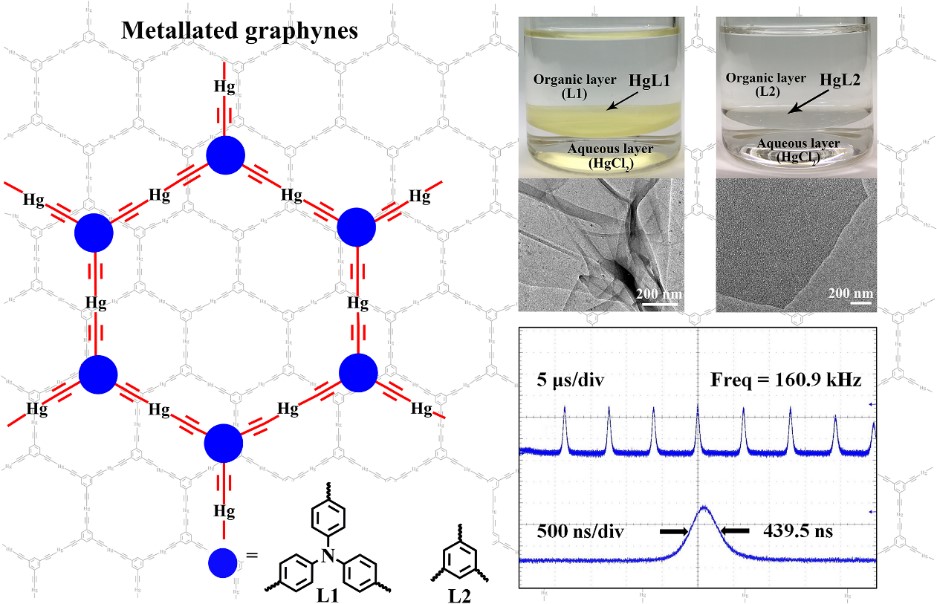Recently, Chinese scientists reported a new class of two-dimensional (2D) third-order nonlinear optical (NLO) materials, called metallated graphynes. The new material, exhibits broadband (at both 532 and 1064 nm) saturable absorption NLO property and high laser damage threshold.
This work, published in Angewandte Chemie International Edition, was directed by the joint group of Prof. Wai-Yueng Wong from The Hong Kong Polytechnic University, Prof. XIE Zheng from the Technical Institute of Physics and Chemistry (TIPC) of the Chinese Academy of Sciences (CAS), and Prof. WANG Zhengping from Shandong University.
Researchers prepared two free-standing mercurated graphyne nanosheets firstly by applying an interface-assisted bottom-up method. The large-area nanosheets derived from the chemical growth have shown their layered molecular structural arrangement, controllable thickness and enhanced π-conjugation. The mercurated graphyne nanosheets are therefore having stable and outstanding broadband nonlinear saturable absorption properties.
With the help of the absorption ability, the metallated graphynes are acting as saturable absorbers. And it has better pulse properties and Q-switched performances, especially comparing with traditional 2D materials (like graphene, black phosphorus).
The work reveals that the metallated graphyne materials can go beyond graphyne. The new material could not only be a new family of stable 2D carbon-rich materials under ambient conditions, but also possess unique properties and application prospects. It could be helpful in the future design of various structures for optoelectronic materials and devices.
Besides, the nanosheets with controllable thickness and high transparency can be transferred on the optical glass and other substrates. It could be directly applied as free-standing films in optoelectronic devices.
The new proposed nanosheet has advantages in optical property, mechanical processability and control of molecular dimensions. And this could be benefited the design of optoelectronic materials and fabrication of their devices in applications such as nonlinear optics, optical limiting, optical communications and so on.

Figure. Chemical Structures, Interface-assisted Preparation, and Nonlinear Optical Passively Q-switched Performances of Metallated Graphynes (Image by Wong et al.)
https://doi.org/10.1002/ange.202014835
NEWS